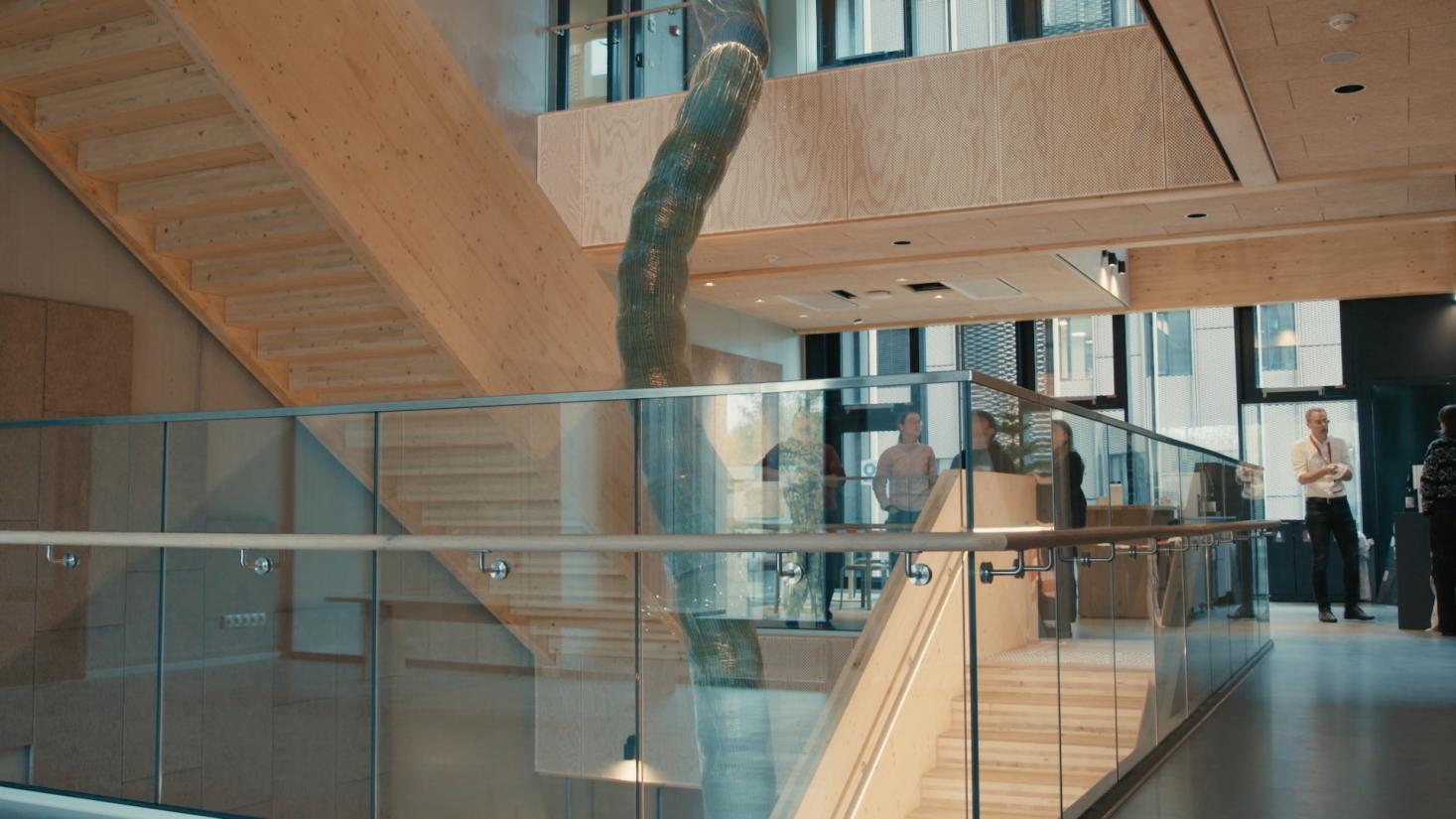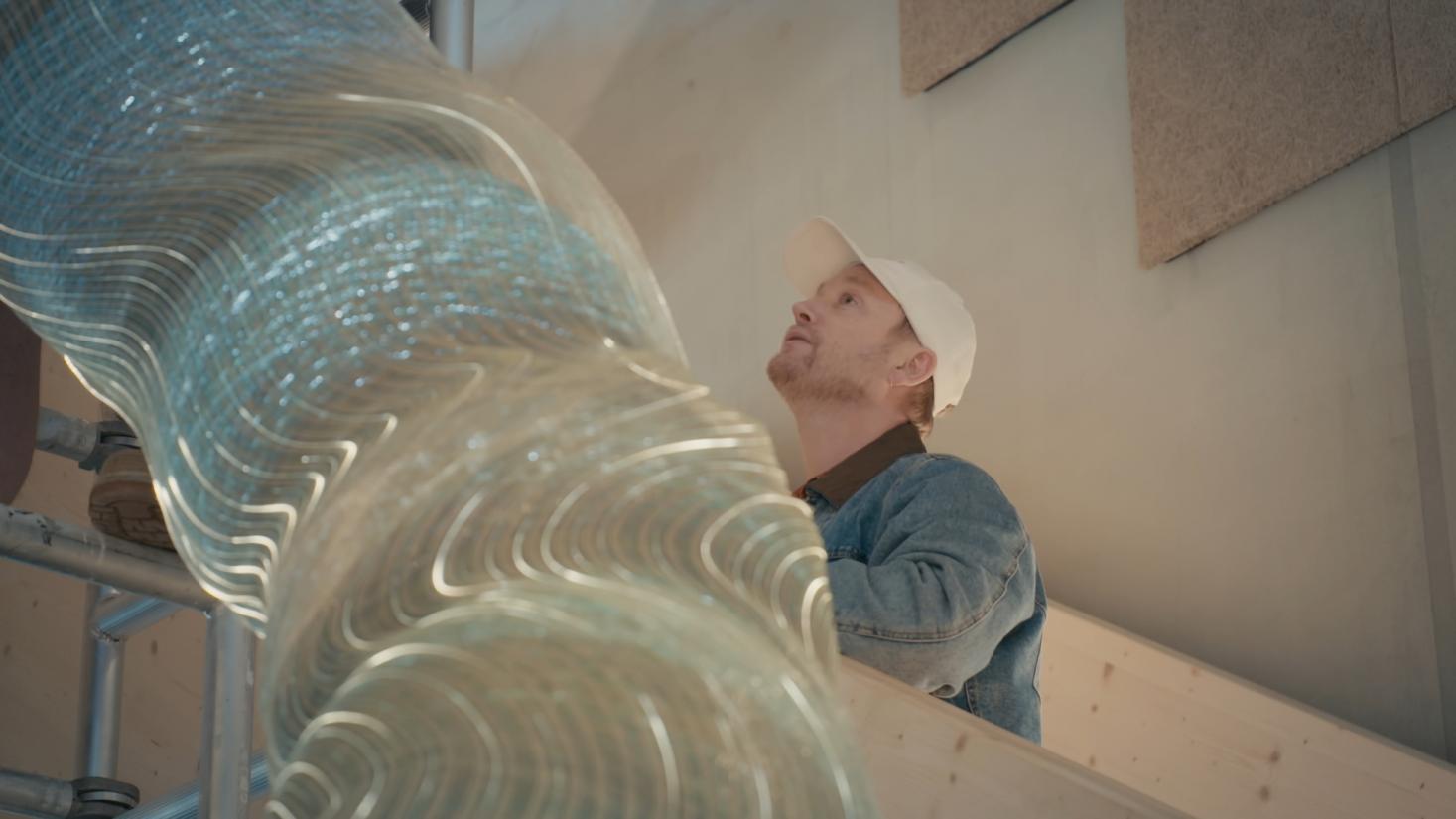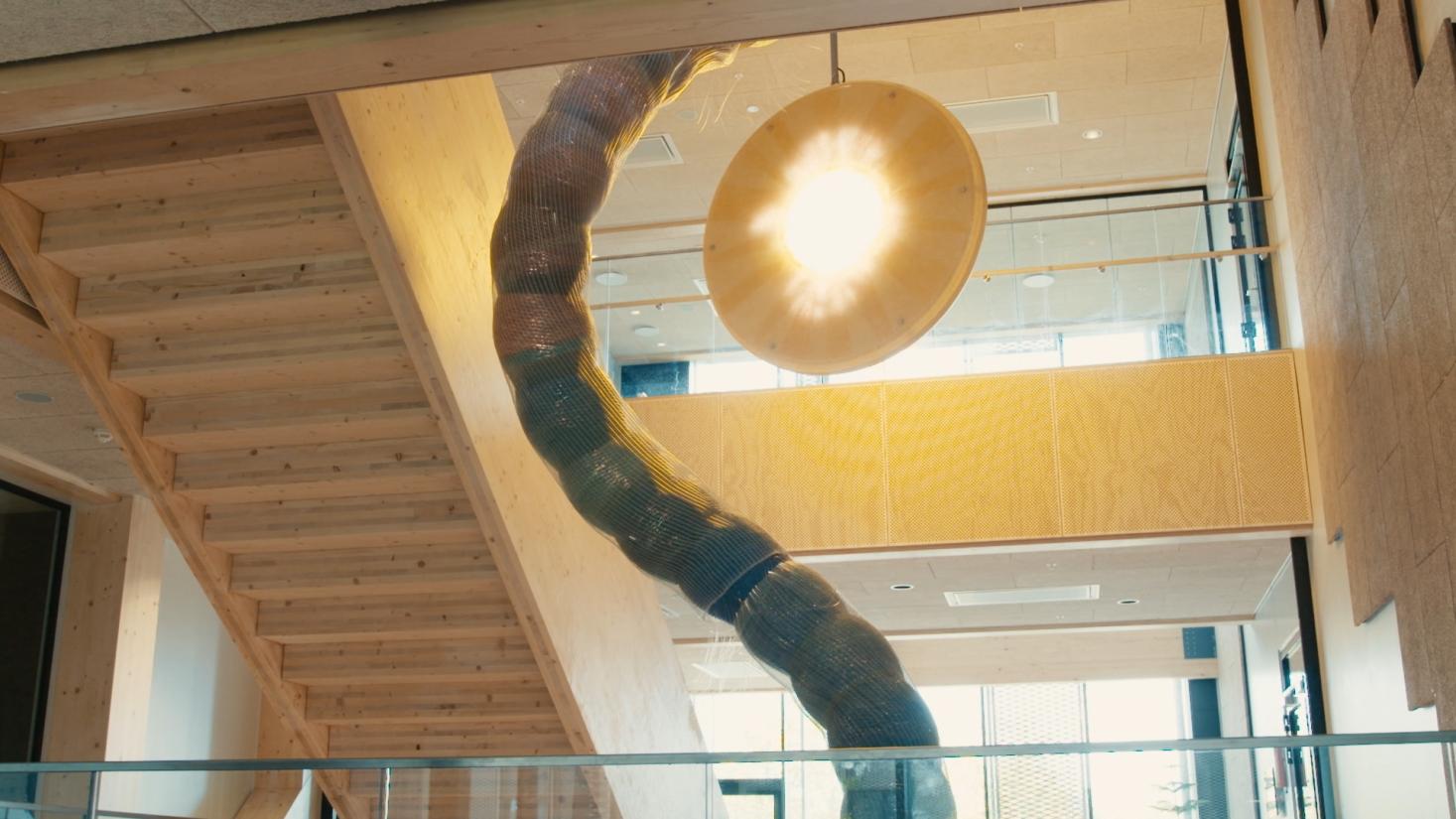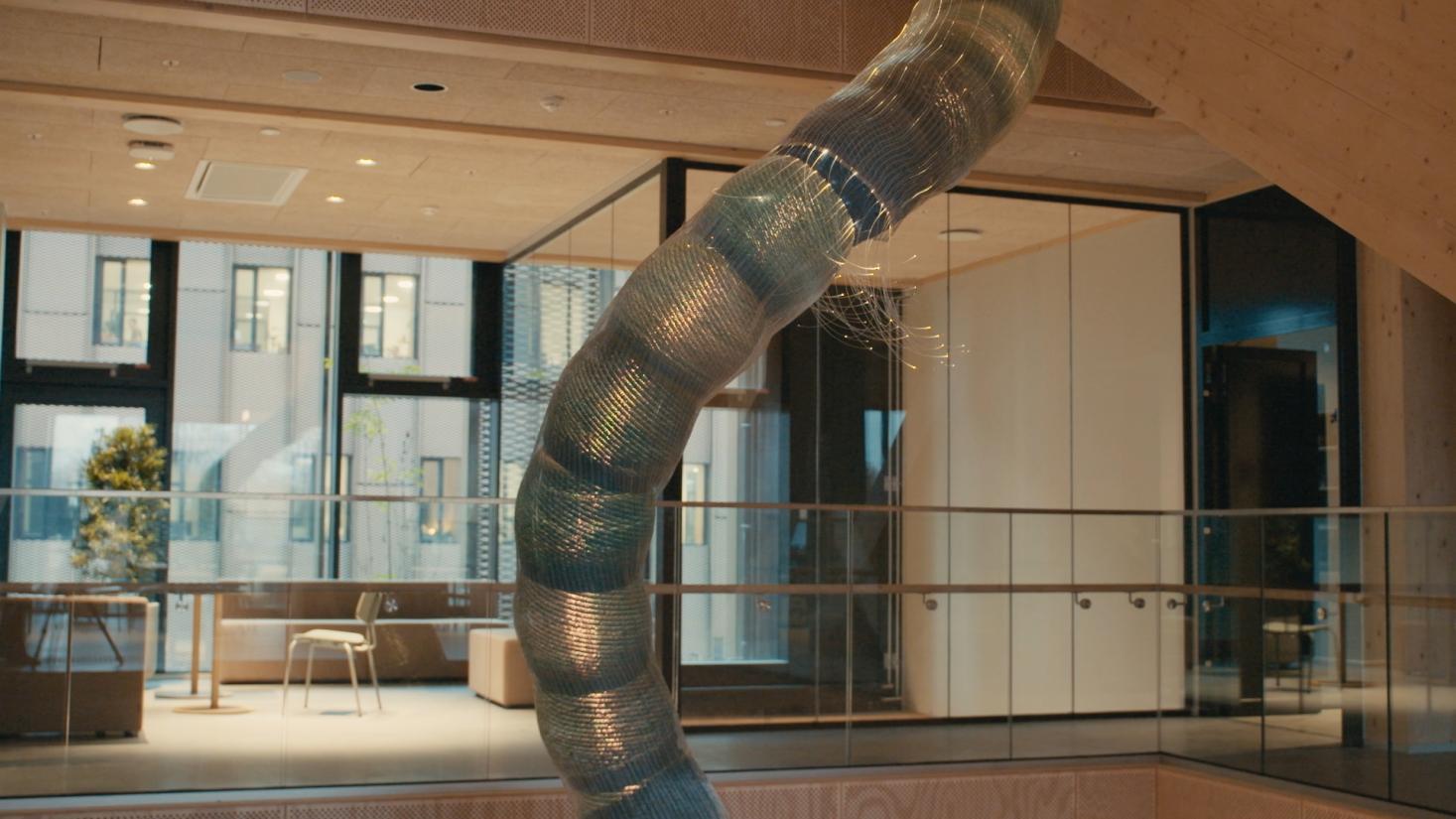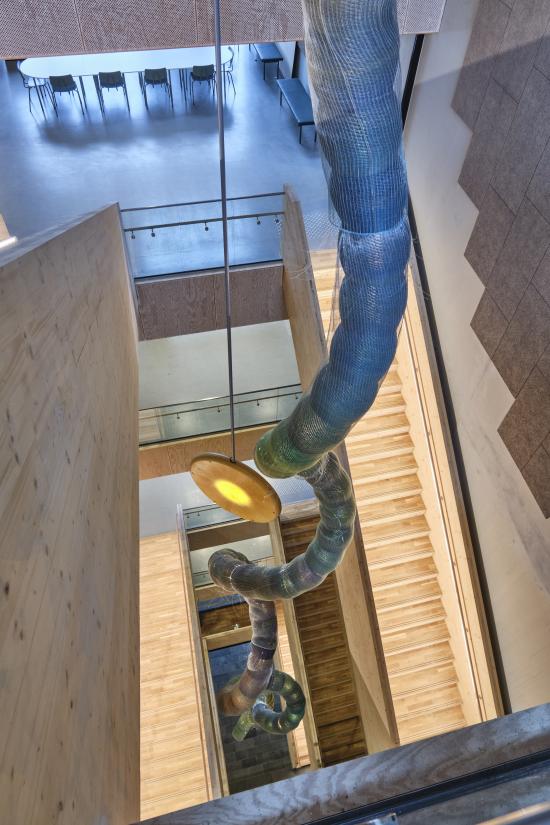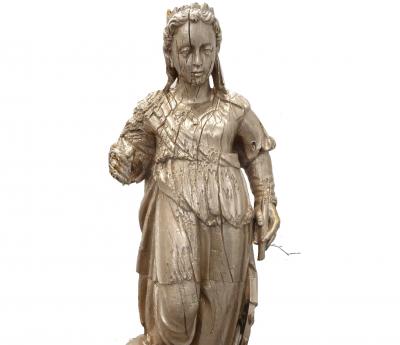In Building 313 at the Lyngby Campus of the Technical University of Denmark (DTU), which houses the Climate Challenge Laboratory, students and researchers now encounter four works of art by the Danish artist Tue Greenfort. The artworks, which are made from a variety of materials including dyed recycled glass and charred spruce planks, aim to inspire the researchers working in the lab and promote innovation.
In the new building, physicists, chemists, energy engineers and biologist will be working on solutions to some of the world’s climate challenges in collaboration with researchers from other disciplines as well as students and companies.
Art in architecture
The art was created for the specific building in close collaboration with the architects who designed it and the researchers who are going to work there.
‘The artworks should manifest an expression and an atmosphere in this core space that the architects have established for the scientists,’ says Tue Greenfort.
Tue Greenfort created four works of art for the Climate Challenge Laboratory: Helios, Photosynthesis, Huset Brænder (House on Fire) and Climate Zones. As permanent installations, they are a part of the building and a comment on the knowledge that the setting is intended to generate.
Helios
Helios is suspended inside the stairwell, centrally positioned in the building. It consists of a luminous glass mosaic disc with a diameter of 2 metres that rotates around its own axis at a rate determined by the influx of sunlight.
Tue Greenfort explains that the piece was inspired by the sun cults of early civilizations and their depictions of the sun, which is simultaneously a condition of virtually all life on earth and capable of turning the surface of the planet into a barren desert.
‘The sun may also be seen as a symbol of Power-to-X and a source of inspiration for innovative future solutions as part of the green transition.’
The piece is made of recycled glass from solar cells. Tue Greenfort works with a German company specializing in converting panels from solar cells into new, workable glass.
‘It’s really a bit of a gift to find such a material. It speaks to our time, where industry is also realizing the importance of recycling materials. We can’t continue to build new things from scratch using expanded polystyrene and concrete.’
Photosynthesis
Among the equipment in the new Climate Challenge Laboratory is a sophisticated electron microscope. With reference to this specific microscope, a long light sculpture now winds its way down the stairwell, from the top floors to the ground level.
Photosynthesis was inspired by cyanobacteria, also known as blue-green algae: a microscopic organism that is the likely origin of photosynthesis, which created the earth’s oxygen-rich atmosphere.
‘Techniques that enhance our ability to see – whether it’s a microscope or a telescope – are inherently fascinating. The infinitely small relates to its opposite. Immensely large objects become worlds as you zoom in and make other objects visible, depending on scale. It is a micro-macrocosm. A sort of holistic understanding of complexities that open and close, depending on your vantage point. That is a core concept to me: what we see is not immediately visible. The scientific instruments provide an extension of our sensory system,’ Tue Greenfort explains.
Photosynthesis is the driving factor of life on earth and an image of the connection between energy and life.
‘That is what we should be moving towards. A different approach to energy production. We need to make sure that as we generate energy, we are also promoting all the other forms of life and vital processes on earth. Otherwise, we’re headed for our downfall, like so many civilizations before us,’ says Tue Greenfort.
The structure of the light sculpture consists of a chain of 3D printed plastic cells enveloped by a handwoven web of optic fibres. The materials include polypropylene granulate made from recycled plastic from DTU.
Huset brænder
The communal space at the building’s ground level is designed to promote knowledge sharing, informal encounter and social activities among students and researchers.
Huset brænder is a single charred wooden column that is part of the load-bearing structure of the building.
‘The charred wood is an easily decoded image and a symbol of the dramatic and urgent global climate change facing the world, including the occurrence of extreme wildfires. The time for action is not tomorrow. It is now, our house is on fire,’ says Tue Greenfort.
Climate Zones
Tue Greenfort has divided plants and trees in the building into their associated climate zones, either temperate or tropical.
‘Conceptually, this incorporates the plants into an expanded climate narrative. Plants and trees are profoundly challenged by the drastic climate change we are witnessing,’ he explains.
A larger narrative
The four artworks in the Climate Challenge Laboratory are all part of a larger narrative.
‘It is a way of engaging with the building through four different angles, each one contributing to a coherent story about the climate challenge we are facing,’ says Tue Greenfort.
From late 2024, visitors can experience the building and the art project as part of DTU’s Art Route, a guided tour of 14 works of art at DTU’s Lyngby Campus.
Tue Greenfort’s art project was donated by the New Carlsberg Foundation based on an application from DTU.
About Tue Greenfort
Tue Greenfort (born 1973) studied at Städelschule, Staatliche Hochschule für Bildende Künste in Frankfurt am Main, Germany, and at the Funen Art Academy, Odense, Denmark.
Tue Greenfort is a pioneer of Art & Research, an artistic approach that engages critically with the environment, the climate crisis and our concept of nature. He has held solo exhibitions around the world. Greenfort began his career as a visual artist and later moved towards large-scale installations.
Tue Greenfort was awarded the New Carlsberg Foundation’s Artist Grant in 2022.
